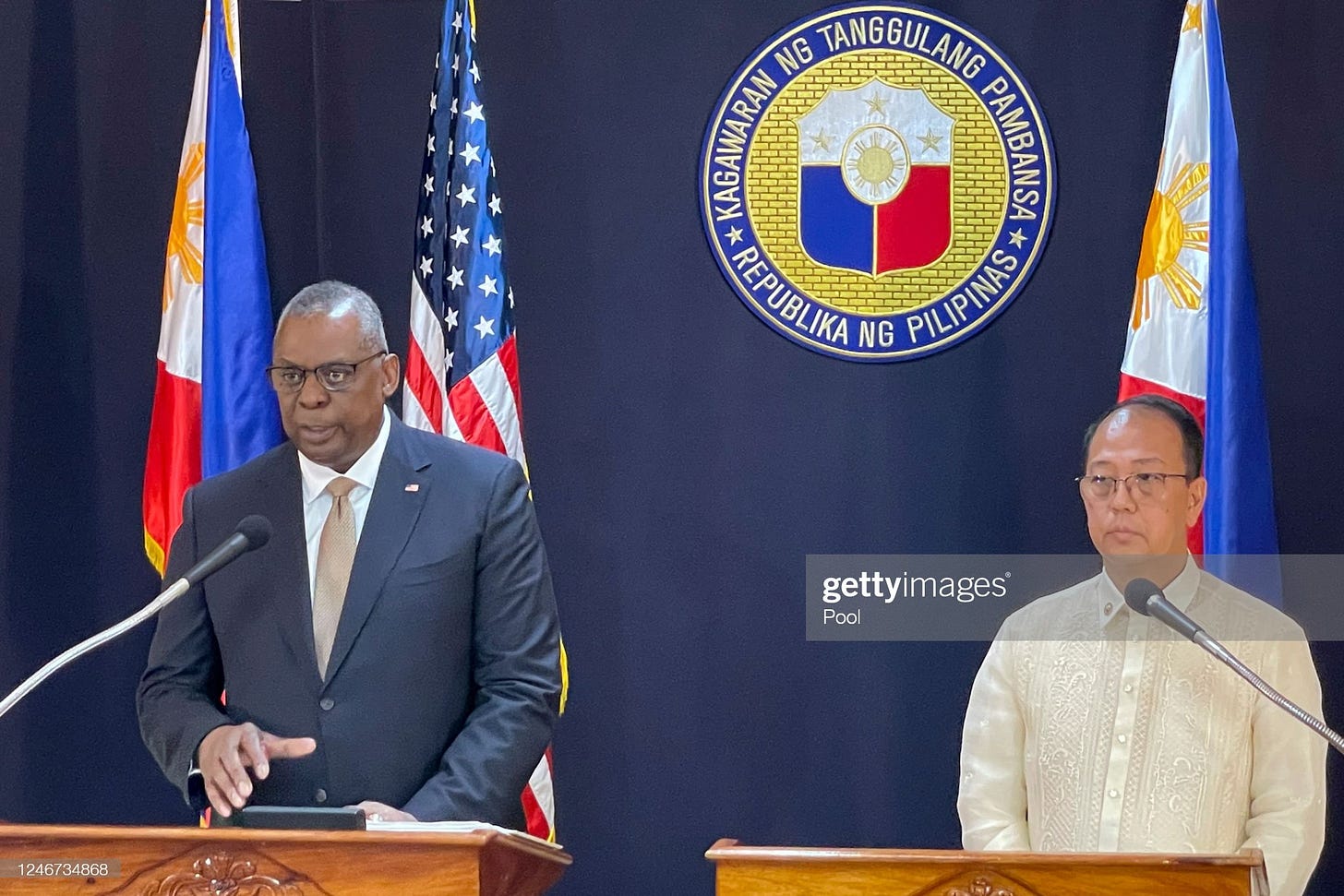Digest: How America to get new military bases in Philippines
The US reached agreement with the Philippine government as part of its efforts to increase its presence in the Asia Pacific region.

What's in the New Deal?
The Philippines and the United States announced on Thursday that the Philippines will allow increased access to its military bases by the US, giving American forces a more favorable position near Taiwan in the southeast part of the South China Sea.
The new agreement will permit the US to have access to four additional locations as part of the 2014 Enhanced Defense Cooperation Agreement (EDCA), giving the US access to four additional military bases for troop rotation. This will bring the total number of bases accessible to the US in the Philippines to nine.
The accord was made during U.S. Defense Secretary Lloyd Austin's visit to the Philippines, where discussions took place regarding the placement of American troops and weaponry at more Philippine military facilities.
“That’s just part of our efforts to modernize our alliance. And these efforts are especially important as the People’s Republic of China continues to advance its illegitimate claims in the West Philippine Sea.”
Said by: Defence secretary Lloyd Austin
What is EDCA??
The Enhanced Defense Cooperation Agreement (EDCA) is a treaty between the United States and the Philippines aimed at strengthening the relationship between the two countries.
The treaty allows the US to rotate its troops into the Philippines for extended periods and construct and manage facilities on Philippine military bases for both American and Philippine forces.
The EDCA was signed by Philip Goldberg, the US Ambassador to the Philippines, and Voltaire Gazmin, the Philippine Defense Secretary, in Manila on April 28, 2014, just before a visit by then US President Barack Obama on the same day.
Under EDCA, the US currently has existing 5 bases in the Philippines:
Why is this a move to counter China in the Indo-Pacific?
The recent announcement on Thursday follows a series of significant agreements between the US military and various countries in the region, such as the plan to exchange defense technologies with India and the plan to station new US Marine units on Japanese islands.
Experts have suggested that these agreements may provide the US military with a strategic advantage in the event of a crisis in Taiwan or the South China Sea, as they are better positioned to launch operations.
The U.S. aims to have smaller groups of rotating troops in the area in order to prevent any conflict with China, which may view larger bases as a challenge to its claims in the South China Sea.
China has significantly strengthened its military capabilities and is now a force to be reckoned with.
The Philippines is in a difficult position, as they are unable to stop Beijing from changing the territorial boundaries of the South China Sea.
Since 2014, China has constructed ten island bases, including one located at Mischief Reef which is well within the Philippines' own designated economic zone.
Historical Background:
US ties with the Philippines date back to 1898 with the Treaty of Paris and the cession of the Philippine colony from Spain to the US.
The Philippines was a US territory until independence was granted on July 4, 1946.
The US maintained a military presence in the country after independence.
Clark Air Base and Subic Bay Naval Station were two of the largest US military installations overseas located in the Philippines.
Both bases supported the US war effort in Vietnam in the 1960s and early 1970s.
Both Clark Air Base and Subic Bay Naval Station were eventually transferred to the Philippines.


